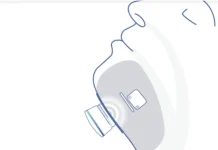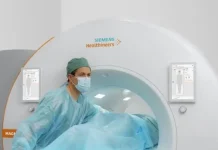Neuspera Medical’s miniaturized neuromodulation device may take up mere millimeters of space, but it’s making an outsized impact on the field of medical technology.
The device is implanted into the body to stimulate nerves linked to chronic illnesses, blocking the signals that may result in painful symptoms. The neuromodulation therapy is managed by an external wireless controller that, when worn close to the body, can transmit electromagnetic pulses through skin, fat, muscle and bones to stimulate the indicated nerves.
The system has now received a major vote of confidence in the form of a $65 million series C funding round. That’s more than double Neuspera’s early 2019 series B, which brought in $26 million across two tranches, and nearly triples the company’s lifetime funding. The round was co-led by Vertex Ventures HC and Treo Ventures, each of which will send representatives to Neuspera’s board of directors.
The bulk of the financing will be funneled toward the California-based startup’s ongoing clinical trial studying the ability of the neuromodulation system to treat urinary urgency incontinence, its first indicated use.
To address symptoms of overactive bladder, the receiver device is implanted into the lower back, adjacent to the sacral nerve. Once in place, the external controller wirelessly emits electromagnetic waves to the receiver, which in turn sends signals to the nerves and the brain to help normalize bladder function.
Neuspera’s system is designed to help patients resume normal activities as soon as possible after the minimally invasive implantation procedure: Not only is the implant many times smaller than other neuromodulation devices, but the controller is also programmed and managed remotely by the patient’s care team and able to work discretely throughout the day while being held close to the body in a specialized undergarment.
“We are excited to see the first cohort of patients experiencing the known benefits of sacral nerve stimulation through the use of our ultra-miniaturized neuromodulation platform—driven by the support of the physician investigators in the SANS-UUI clinical trial,” said Milton Morris, Neuspera’s president and CEO.
“We are excited to continue our focused efforts on enabling access to the known benefits of neuromodulation to patients who are struggling with chronic and debilitating medical conditions,” Morris continued.
Neuspera is far from alone in the crowded field of neuromodulation technologies to treat long-term illnesses. Major medtech players like Abbott and Medtronic have introduced nervous system-stimulating devices to lessen symptoms of chronic pain and movement disordered like Parkinson’s disease and essential tremor.
And just last month, the FDA cleared an offering from startup NeuraLace that relies on external nerve stimulation to stimulate the peripheral nerve cells that are linked to pain relief, rather than requiring an implanted receiver device like Neuspera’s.
Watch the Neuspera Sacral Neuromodulation System (SNS) – medical device animation






